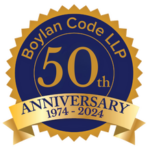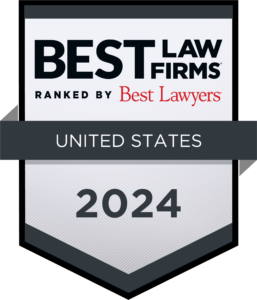On June 14, Monroe County executive Maggie Brooks announced an initiative directing compliance with Leadership in Energy and Environmental Design (LEED) building standards for new county construction projects and any major building renovation projects of greater than 5,000 s/f. The initiative also requests that the county of Monroe Industrial Development Agency adopt a “green building” incentive package to encourage private sector implementation of LEED building standards.
I recently attended a conference at which William Lashbrook III, a member of the U.S. Green Building Council (USGBC), discussed LEED standards. LEED is the nationally accepted benchmark for the design, construction and operation of high performance green buildings. LEED standards have a number of goals, including: creating sites that are sustainable, water and energy efficient; are protective of the atmosphere; maintain indoor air quality; efficiently utilize materials and resources; and implement innovative ideas to upgrade, operate and maintain buildings.
Despite concerns that going green may result in increased costs, Lashbrook, and my later exploration of the topic, illustrated a number of benefits to building green: Being environmentally aware is the socially responsible thing to do; owner/operators can reduce operating and maintenance costs through more energy efficient designs, as well as reducing water and energy consumption; potential for governmental grants or tax credits; increased productivity and performance; positive advertising and marketing opportunities; and creating a selling point regarding the building space for which many people and businesses may be willing to pay more.
The options of available green measures are impressive:
- Alternate or renewable energy sources. NYS executive order No. 111 recites “wind, solar, thermal, photovoltaics, sustainably managed biomass, tidal, geothermal, methane waste and fuel cells” as examples – by no means an exhaustive list. In addition to these, the LEED standards also encourage other methods of reducing the use of fossil fuels, such as access to public transportation, bicycle storage and changing rooms, and carpooling and/or telecommuting. To the extent that energy can be generated on-site, these green initiatives can represent continued future cost savings, mitigating upfront costs.
- Recycled materials can cover a wide range, including rehabilitating existing structures; reusing materials already on-site (land-clearing debris, cardboard, metals, brick, concrete, plastic, clean wood, glass, gypsum wall board, carpet and insulation) 1; and seeking to utilize other recycled material (ash as a component in concrete instead of cement, or other recycled composites).
- Resource conserving practices are familiar to most of us – as simple as turning off lights when we leave a room. The LEED standards regarding conservation are far more encompassing than one might think, and include reduced site disturbance, storm-water management, water efficient landscaping, innovative wastewater technologies, water use reduction, minimum/optimized energy performance, CFC (ozone damaging materials) reduction in HVAC&R equipment, etc.
- Resource conserving devices, including motion detector light switches, dual flush toilets, drought resistant plants to avoid constant water use for irrigation.
In Rochester, an article was recently published2 about the new facility of the city’s Bureau of Water & Lighting, completed in Dec. 2006. The new facility took its first “green” building step by rehabilitating the site which had become contaminated over the last 100 years of use and classified as a “brownfield” site, instead of abandoning the site to find and develop a “greenfield,” or previously undeveloped site. The bureau demolished the old structure and remediated the site in accordance with the N.Y. Dept. of Environmental Conservation requirements. The bureau then reused over 95% of the demolition and construction debris in the rebuilding process rather than sending the debris to a landfill.
The director of Water, Robert Morrison, confirmed that the new building was recently awarded LEED Gold Certification, a first in the city. Tracie Hall, executive director, N.Y. chapter of the USGBC presented the certification to mayor Robert Duffy on November 2. In order to achieve the gold certification, the building earned a total of 42 LEED points. Morrison credited the project’s success to the cooperative efforts of the city architect, the bureau’s senior engineer, Mike Bushart, the contractors and LaBella Associates Architects. Some of the features in the Bureau’s new facility include:
- Water conservation, through new dual flush toilets, waterless urinals, and drought-tolerant landscaping, which does not require a permanent irrigation system;
- Improved energy conservation that results in the reduction in fossil fuel usage because: Improved levels of building insulation; occupancy and daylight harvesting controls, plus the use of ultra high efficient fluorescent light fixtures, reduce the demand for electricity; high efficient boilers and heat pumps and, in addition, a heat recovery system to improve the building’s HVAC system; 100% of the electricity used in the building comes from renewable sources such as wind and solar energy; and alternative transportation is available (the building is in close proximity to two bus stops and bicycle racks and shower/changing facilities are provided).
- Utilization of local/regional materials, to reduce energy expended in transportation.
- Incorporation of materials and products containing recycled content in excess of 25% of the total amount of materials used in the project.
- Improved indoor air quality by incorporating low volatile organic compound (VOC) emitting materials in the paints, carpeting, sealants, and other coatings used in the construction of the building.
Even with all it encompasses, the LEED rating system, on its face, is not meant to be all inclusive. It recognizes the continually evolving nature of the building industry, and specifically encourages new innovations. I have been excited to learn more about the green initiatives here in Rochester and in the central New York region, and we can all look forward to a greener future as a result.
- List from www.usgbc.org the LEED Rating System 2.0, June 2001.
- http://ceinfo.org/rgbn/details.php?CaseStudyID=34 “City Transforms Brownfield into Water Bureau’s Green Dream.” Cassandra Rich, Esq., is an associate at Boylan Code, LLP, Rochester, N.Y. continued from page 20


